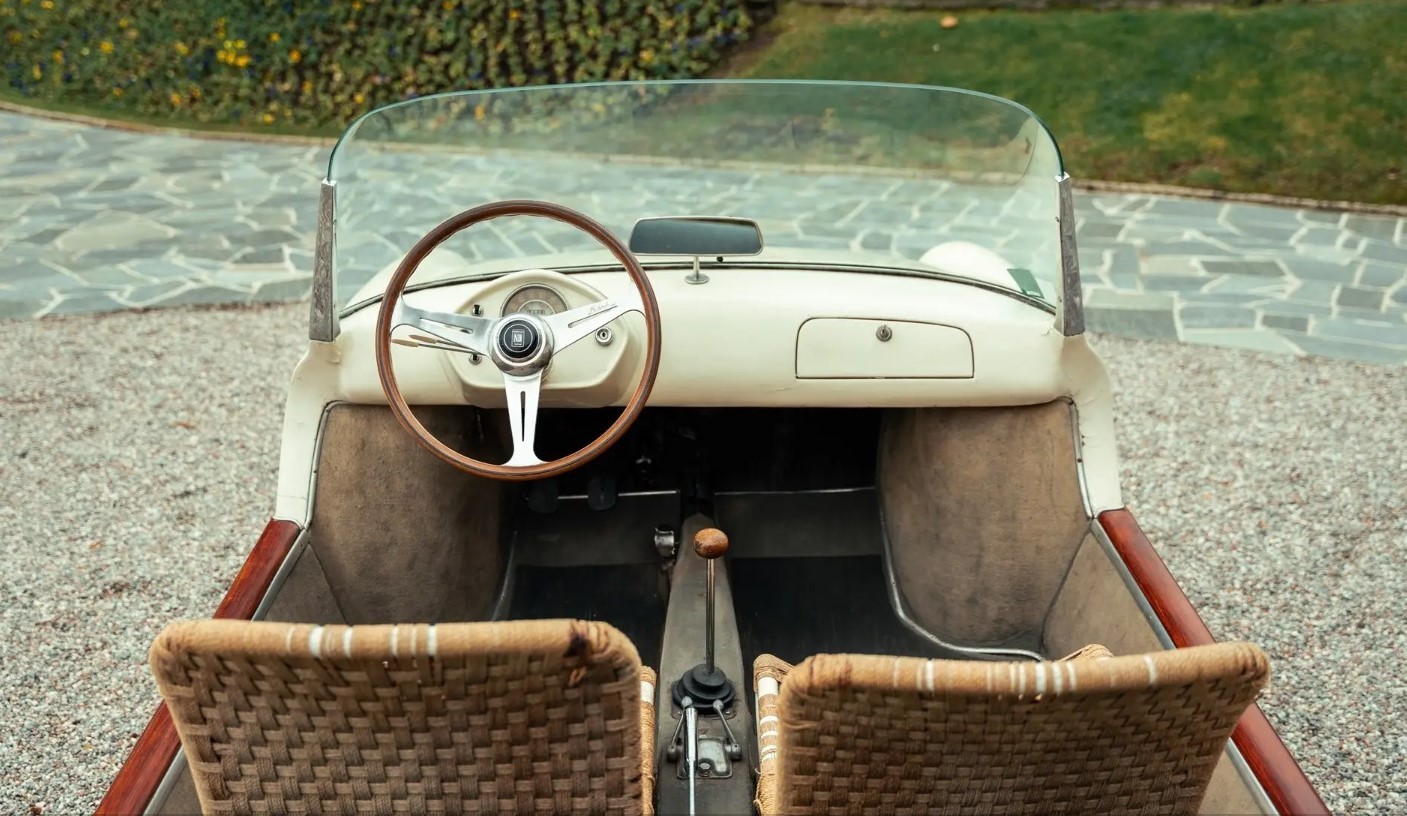The Cute Fiat 500 Spiaggina Boano Is the Italian Classic That Started the Beach Car Trend

We're talking about the Fiat 500 Spiaggina Carrozzeria Boano, a true automotive icon that was commissioned by renowned Italian industrialist Gianni Agnelli in 1958 and has the ability to conjure up feelings of nostalgia for the Dolce Vita and carefree seaside holidays in the golden years of the Italian economy.
Hardly ever can you trace a new breed of vehicles back to a single car, or in this case a pair of cars, but everyone in the automotive industry agrees that the international "spiaggina” trend (beach-ready cars) was sparked by the two Fiat 500 Spiagginas made by Carrozzeria Boano. One was owned and used by Agnelli himself, while the other was gifted by the former Fiat president to his longtime friend and fellow industrialist Aristotle Onassis. Sadly, the latter example was destroyed in an accident, which makes the example you see pictured here a true unicorn.
This is the car that Giani Agnelli personally used to travel between his summer residences on the French Riviera. It was also a status symbol for Agnelli, who would often use it to transport his illustrious guests and family members to his Villa Leopolda in Villefranche-sur-Mer, to the beach, and into the nearby town.
Regarding the design of this unique vehicle, Gianni Agnelli himself is credited with developing the concept of the beach car, but the hard work was conducted by internationally renowned Turin designer Mario Boano of Carozzeria Ghia, who also created the bodies for the Alfa Romeo Giulietta Sprint of 1954, the Abarth 209A Coupé of 1955, and the Ferrari 250 GT.
Built on the platform and underpinnings of the Fiat Nuova 500 - a very popular car at the time - the Spiaggina boasts minimal bodywork with no doors or roof but stands out for some original design solutions, such as the Nardi wood and metal steering wheel and the stylish front seats finely covered in wicker.
The Fiat Nuova 500's chassis was profoundly modified, not only for aesthetic purposes but also to create greater roominess. The exterior of the car boasts a two-tone paint scheme with a cream top and a navy blue bottom, accented by a wooden strip around the belt line. A full windscreen protects passengers from moving debris and incoming wind. While in the front you will find motorboat-inspired wicker seats, passengers in the back are treated to a more plush and comfortable rear bench with armrests.
This cute beach car rides on steel wheels with chrome hubcaps and wrapped in classic white wall tires and comes with the drivetrain of the Fiat Nuova 500 it is based on. This means power comes from a rear-mounted Fiat 479cc inline twin-cylinder engine, an air-cooled mill with overhead valves that delivers 15 hp at 4,000 rpm. It is mated to a four-speed manual transmission that sends power to the rear wheels, and the vehicle also has independent front and rear suspension and drum brakes on all four wheels.
During the 1960s, the Spiaggina Boano was frequently featured on the pages of fashion magazines worldwide. The design of the beautiful beach car would prove highly influential, kicking off a trend that carried on well into the 1960s and 1970s. It inspired the creation of models like the Fiat 500 Jolly, the Citroen Mehari, the Mini Moke, the Volkswagen Thing, the Renault Rodeo, and more. While some of these vehicles were originally designed for military use, they were eventually repurposed by their owners as beach cars.
After using it extensively at his spectacular beach residence, Agnelli is said to have gifted the Fiat 500 Spiaggina Boano to his personal driver, Bernadino Aiassa, in 1973. Later on, the car was sold to Mario Rossi, and then it was lost for years until it was recently discovered by a noted Turin collector. Most recently, it was shown at the Concorso d'Eleganza Villa d'Este in 2018.
Today, this authentic automotive icon remains in unrestored and highly original condition, with a beautiful patina throughout the interior and exterior.
You would expect a car that holds such significant historical value for the automotive world to be exhibited in one of the world's most prestigious museums, but this Italian classic is set to cross the auction block at the end of January with a price estimate between £230,000 and £250,000, or approximately $295,000 – $315,000. As the sole survivor of the originator of the beach car genre, this car is a true collector's item and would make a fantastic addition to any collection.








Related News
